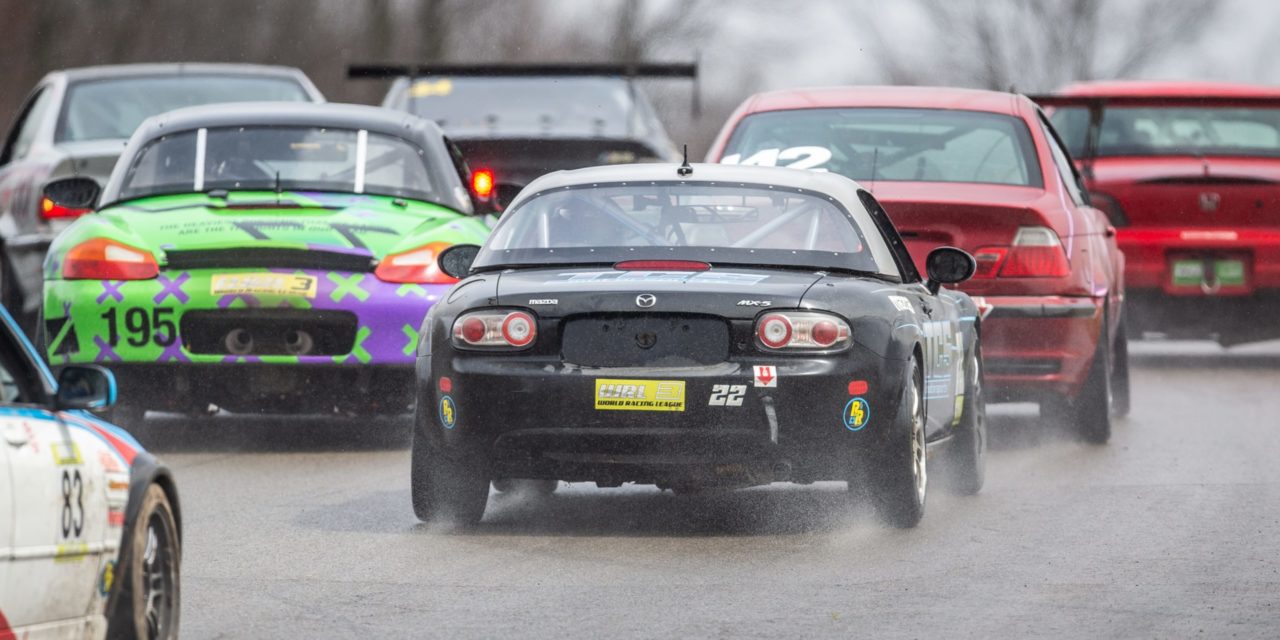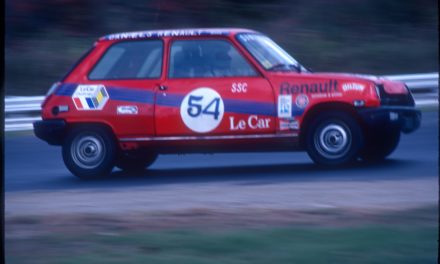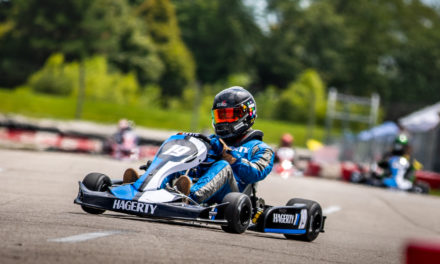(In case you missed Part 1, where Preston discussed overtaking and the SCCA’s recent additions to its passing rules, click here. Now, for Part 2. -Ed)
“I’m in the let-’em-race camp,” says Bryan Herta. The retired open wheel driver now fields a team in IMSA’s Michelin Pilot Challenge. “I don’t think you can write rules to fit every scenario and there will always be differences of opinion. But to try to officiate that out of motorsports is, to a certain extent, wrong.”
Overtaking has become such a contentious issue in recent years precisely because passing has become so difficult. Because of the proliferation of instruction and inexpensive data and video analysis tools, drivers are better and more evenly matched than they’ve ever been. So are the cars, thanks to spec classes, one-make series, and Balance of Performance regulations.
Aerodynamic aids make it harder to follow cars closely, which cuts down on passing opportunities. Better brakes mean the brake zones—which is where most competitive passes occur—have gotten shorter, and ABS allows a clueless noob to brake just as late as the studliest hero.
At the same time, cars have gotten more robust and reliable, which encourages drivers to treat them like battering rams rather than scalpels. “You wouldn’t see tire doughnuts on a Porsche 962 [in IMSA in the 1980s] because that would damage the car, and it would damage your car, too,” Raffauf says. “But by the time we got to Grand-Am Daytona Prototypes [in the 2000s], if you didn’t have tire doughnuts the length of the car, you weren’t trying hard enough.”
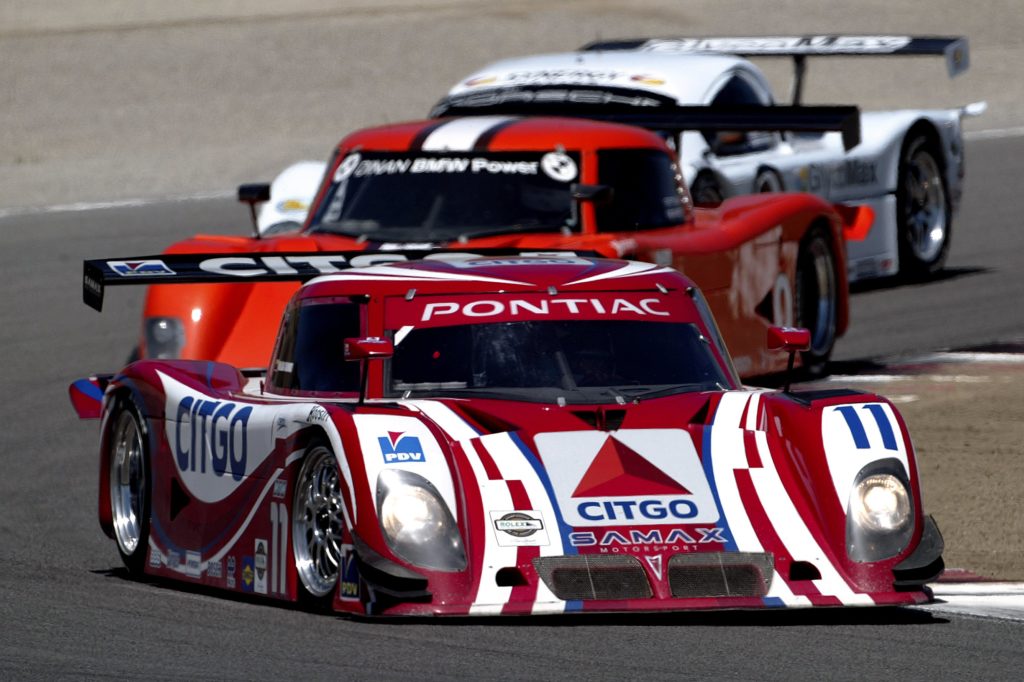
Gavin Lawrence/Getty Images
But the biggest single factor in reshaping rules regarding passing and defending has been improved safety. Cars and tracks were lethal through the 1970s, and fatalities continued to be distressingly common into the 1990s. Self-preservation factored into the equation in a way that’s no longer true today, when drivers tend to think they’re invincible.
“You can get away with things that would have killed you in a Formula Ford 25 years ago,” says Ross Bentley, whose career peaked in Indy cars before he became the country’s best-known driver coach. Fellow open wheel ace Max Papis adds, “There was a philosophy that you didn’t want to be the guy who showed up at the funeral of the guy you closed the door on.”
Naturally, there have always been drivers who used intimidation as a weapon. Although Stirling Moss modeled his elegant and relaxed driving style on the example set by Guiseppe Farina, who won the first F1 World Driving Championship in 1950, Moss considered him a “dirty” driver. (Farina supposedly killed two rivals by driving them off the road.)
Farina was an outlier. Most observers credit—or, more commonly, blame—Ayrton Senna with transforming the prevailing philosophy about overtaking.
“The world changed at Estoril in 1988,” says Nigel Roebuck, the dean of F1 journalists, referring to the Grand Prix of Portugal. “It happened right in front of me, and I can still remember the collective gasp. Senna just swerved across the track and forced Prost up against the pit wall. A friend of mine was holding out a pit board for Ivan Capelli, and at the last split-second, he had to pull it back or Prost would have hit it. Afterward, Prost said, ‘Well now I fully appreciate what Senna is prepared to do. He’s prepared to die.’”
The revolution that Senna launched was consummated by his spiritual successor, Michael Schumacher. Today, Schumacher is remembered less for the passes he made than for the ones he tried to prevent, securing his first World Championship by purposely crashing into Damon Hill at Adelaide in 1994 and missing out on his third title when he hip-checked Jacques Villeneuve at Jerez in 1997.
“Michael Schumacher was the most complete racing driver I’ve ever seen, but he was involved in some of the most egregious blocking moves I’ve ever seen, and they let him get away with it,” says Derek Daly, Conor’s father, who raced in F1 and Indy cars. “He was only continuing what Senna had started. Their behavior became the norm, and it eventually filtered down to the junior formula. Today, drivers defend at all costs.”
In the States, racers tended to be less cutthroat. Indy cars came from an oval-track tradition, where high speeds and unforgiving walls discouraged wheel-to-wheel-contact. But the addition of road courses and street circuits to the CART schedule attracted drivers who’d been trained in European formula cars. “The Brazilians brought blocking into Indy car racing,” the late racing journalist Robin Miller once told me, referring to a trend that began with the arrival of Senna’s countryman, Emerson Fittipaldi. “They all got mad when I wrote it, but it was true.”
This is probably a good place to mention that the calculations are different in American circle-track series promoted by NASCAR, USAC, and World of Outlaws. Although side-to-side contact and bump-and-runs fall under the heading of Rubbin’ is Racin’ in the stock-car world, they’re taboo in sprint cars and midgets because they often have fatal consequences. (Miller, who raced midgets himself, claimed that even the dirt-track slide job is a relatively modern development.) But whether closed wheel or open, the circle-track custom is to let drivers resolve their own disputes, whether on the track or off.
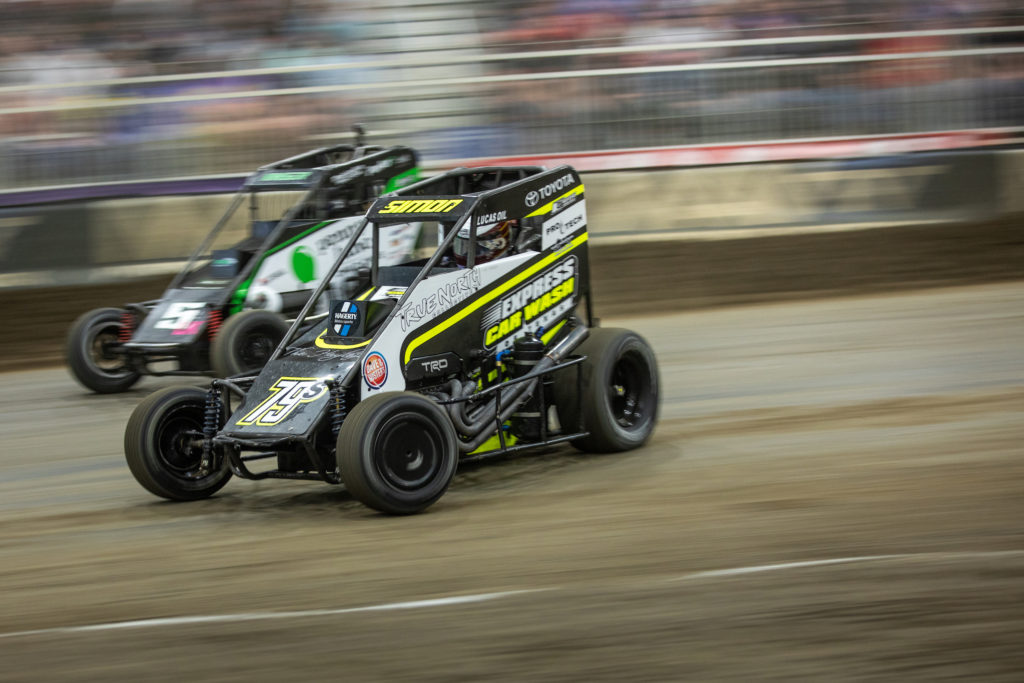
Cameron Neveu
Road racing tends to be more legalistic in its protocols. The hand-wringing—and wrecks—prompted by the Senna/Schumacher all-or-nothing mindset prompted several sanctioning bodies to institute rules that banned what’s now defined as blocking. Generally speaking, the lead driver is entitled to whatever part of the racetrack he wants, but he’s not permitted to move in reaction to the car behind him.
This doesn’t mean that drivers can’t protect their position. Consider this, “the art of defending.” That’s what 1992 Le Mans winner Derek Warwick called it. Warwick earned what he euphemistically calls “a pretty robust reputation” for being hard to pass. These days, race officials start reaching for the black flag when they see one driver “chopping” another—making a last-second lunge to protect his position. There’s still room for cagey techniques like the Pruett Fade, named after the racer, which involves drifting off the ideal racing line to force would-be overtakers into sub-optimal positions.
“You learn to be defensive.” Pruett says. “One of my best teachers was Mario Andretti. I learned how to take the air off a guy’s nose and make his car lose some downforce, which is especially effective on ovals and through fast turns. You have to be subtle about defending. It isn’t a blatant move. You can’t get away with what you used to be able to do in days gone by because there are so many eyes on you.”
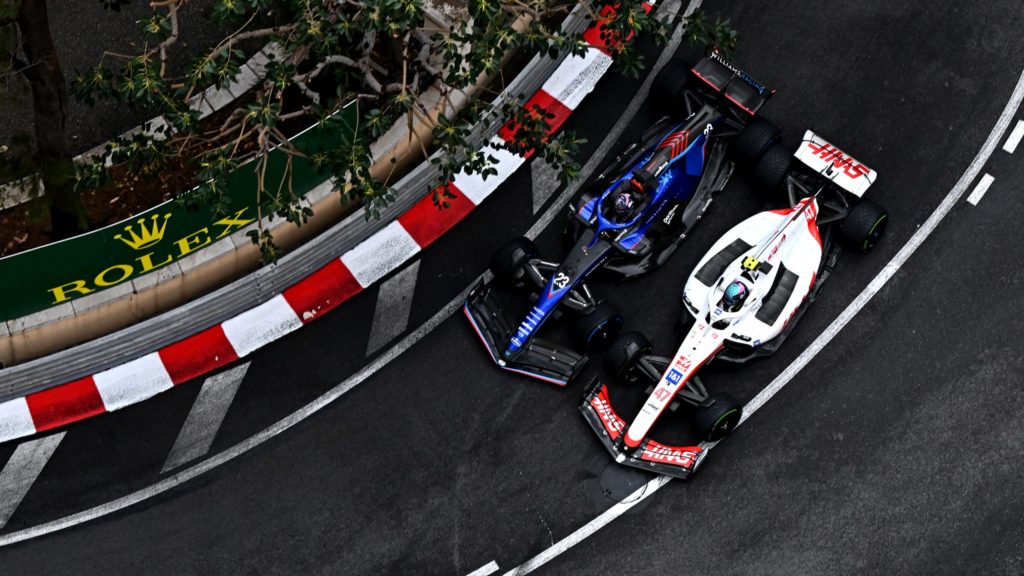
Clive Mason/Formula 1/Getty Images
Because drivers can no longer move in reaction to an overtaking move, they adopt a defensive posture early and often. So instead taking the classic racing line (placing the car on the outside of the track and then carving down to the apex), they take preemptive action to prevent a pass by driving down the inside all the way to the corner and forcing the would-be overtaker to go around the outside—a move that, by its nature, is very, very hard to pull off.
At the risk of sounding like a crotchety old geezer, I still remember how annoyed I was the first time somebody used this tactic against me in an otherwise forgettable SCCA regional at Willow Springs—not on the last lap but from the very start of the race. Up until then, I’d always followed the philosophy showcased in the breathtaking battle between Gilles Villeneuve and Rene Arnoux at Dijon in 1979. Even as they banged wheels, locked up tires and slid off the track, neither one ever protected the inside. Roebuck suggests that it never would have occurred to them.
“As Gilles used to say, ‘Any fool can block,’” Roebuck recalls. “If you’re determined enough, you can keep a guy behind you for lap after lap after lap. The problem is that I don’t know how you write rules to change that. In a perfect world, you could go back to more ethical behavior. But that ship has sailed. It’s not even discussed anymore.”
Times change, and tactics change with them. Rolex 24 winners Ricky and Jordan Taylor grew up watching and then driving for their father, Wayne, who is a two-time Daytona champion. “Our dad is always saying over the radio, ‘Don’t pass on the outside! Don’t pass on the outside!’” Ricky says. “But now, because of the way everybody protects the inside line, people pass on the outside all the time. I remember Jordan making an outside pass one time and then radioing in, ‘Did my dad see that?’”
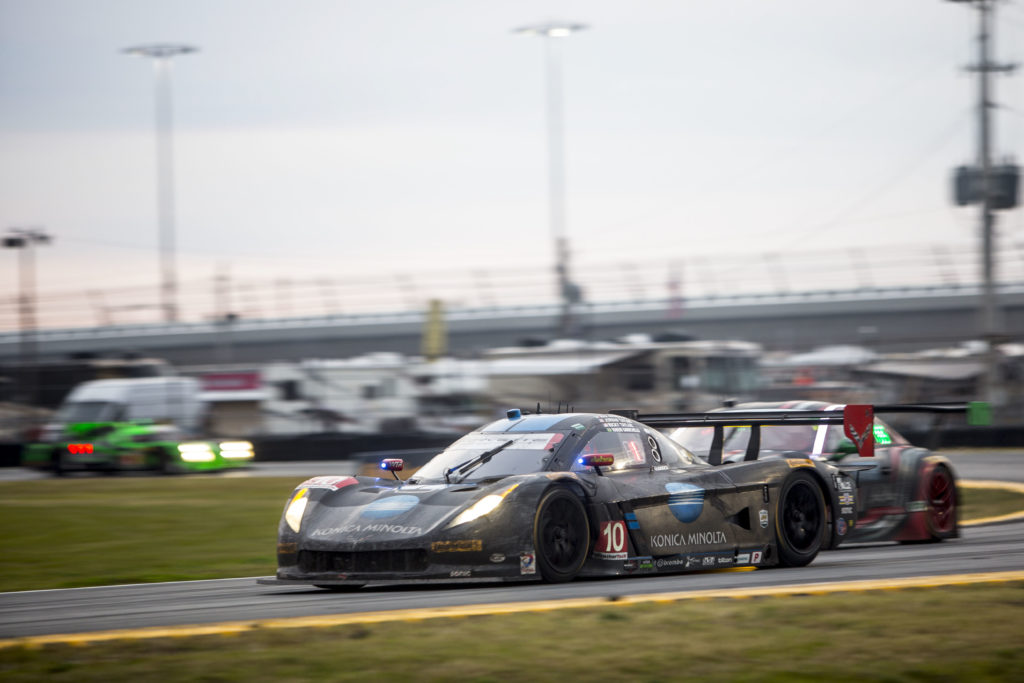
Brian Cleary/Getty Images
The outside pass notwithstanding, overtaking techniques haven’t changed much in the last century. Using the so-called chrome horn—simply nerfing a guy into the weeds—will earn you a quick penalty. But you can still apply pressure and fill the guy’s mirrors in the effort to get him worrying about what’s behind him rather than focusing forward. In the best of all possible worlds, you can encourage him to make a mistake. Some drivers will even let you by just so they can get their head back in the game. But most of the time, you’ve got to elbow your way past.
“To me, it was primarily a question of geometry,” Cheever told me. “If you go up the inside of somebody, there’s nothing you can do to prevent him or her from turning down on you. But I always tried to put myself in a position where my car would be in good shape even if there was an ensuing accident.”
During Cheever’s years in F1, nobody was better in traffic than John Watson. In 1982, he famously won the Detroit Grand Prix after starting 17th. The next year, at Long Beach, he did even better, breezing home first after qualifying 22nd. Mind you, this was in an era before safety cars or pit stops, and there were no full-course yellows to bunch up the field. Time and time again, he went up the inside of the car in front of him and got the job done in the brake zone.
Watson says he was so strong under braking for two reasons. First, he set up his brake pedal so that it never went past perpendicular in relation to the floor which, which he felt gave him better feel. Second, unlike most of his rivals, he wouldn’t go through the gearbox from, say, 5th to 4th to 3rd to 2nd. Instead, he downshifted directly from 5th to 2nd at the appropriate moment so he could focus on threshold braking rather than heel-and-toeing.
The secret of his success, he says, was mental. “When you have a reputation as a good overtaker, you send a message that you’re going to overtake,” he says. “The one thing you can’t do is dither. Either go for it or don’t. You have to be clear and positive. The body language of your car has to say, ‘I’m coming through. Unless you drive me into the wall, I’m going to make the pass.’”
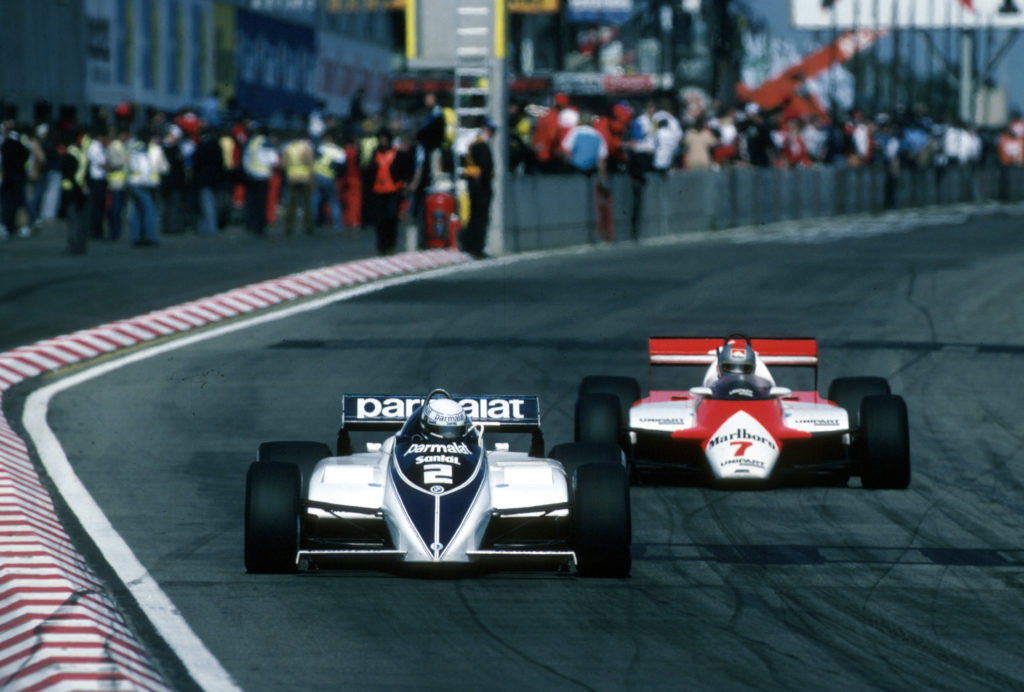
Hoch Zwei/Corbis/Getty Images
Every driver I spoke to agreed that full commitment is essential to any overtaking maneuver. Papis remembers winning a race at Lime Rock after a last-lap pass. “I saw God, Jesus and Mary—and then I braked.”
Or, as Bentley says, “Passing ultimately comes down to mindset, not technique. If you think you can get it done, you can do it.”
Well, yes…and no. Don’t get me wrong. I’m one of Bentley’s biggest fans, and I’ve benefited personally from his coaching. (Thanks, Ross!) But sometimes, even the best drivers can’t make a pass happen. Spare some sympathy for Fernando Alonso, one of the most decisive overtakers of his generation, losing the World Championship in 2010 after spending nearly the entire race in Abu Dhabi trapped behind a mid-pack Renault because passing on the track was virtually impossible during that era of pre-DRS Formula 1.
At the same time, there’s no way around the inescapable fact that some moves are bound to go wrong, and sometimes, inevitably, they’ll go really wrong. “Every pass is a risk,” Conor Daly says. “One thing I hate about racing is that people always try to place blame. Sometimes stuff happens. If nobody tried anything, racing wouldn’t be very exciting.”
Bet on it: Mistakes will be made, and accidents will happen. But that doesn’t mean you get a free pass to be that guy—the one everybody in the paddock complains about. “I was fortunate enough to race with Michael Andretti and Al Unser Jr.,” Bryan Herta says. “When you went into a corner with them, you knew they would always be fair and leave you room. Between them, they won a lot of races. I believe in the golden rule. Race other drivers the way you want to be raced yourself.”
Chris Dyson is, if anything, even more adamant than Herta. “I’m old enough to remember when there were ethics on the track,” he says. “You are how you race. You have to live with whatever you do. I think that’s a good thing to keep in the back of your mind. If you intend to stay in the sport, don’t drive like a thug. You should be good enough to keep a guy behind you without carving him up.”
Words to race by: Don’t hit what you can see. Race other drivers the way you want to be raced. And don’t drive like a thug. Racing is hard enough already.

